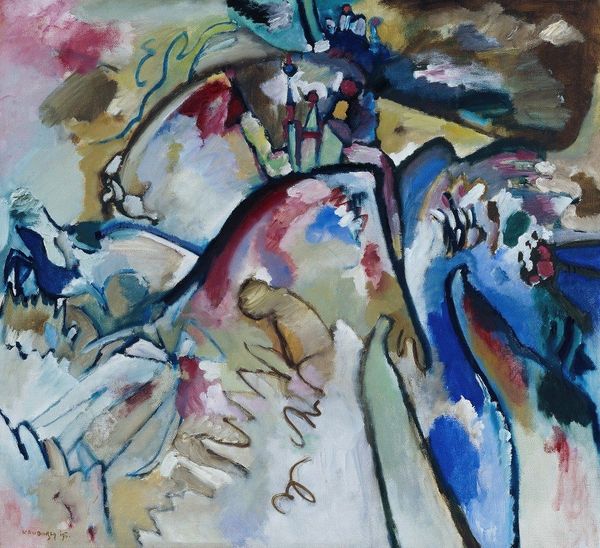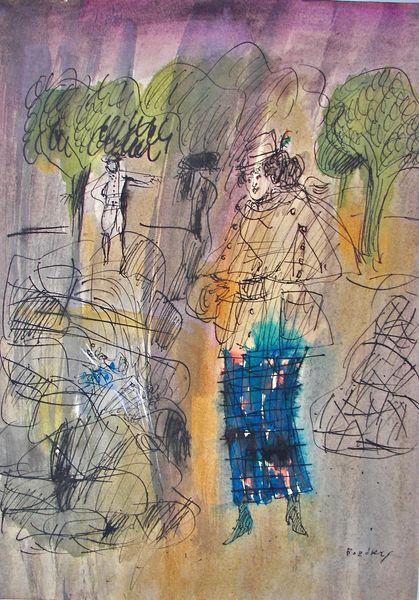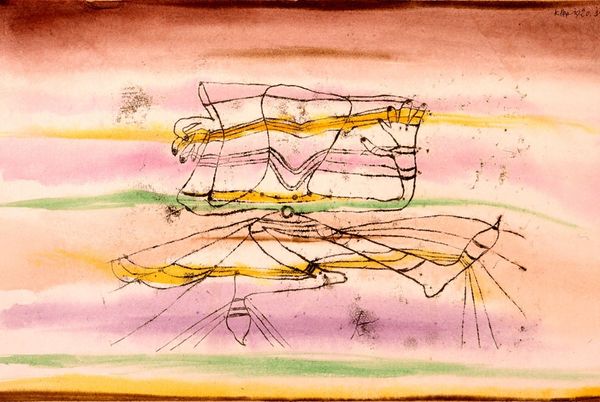
Dimensions: 29.5 x 16 cm
Copyright: Public domain
Curator: Looking at Ernst Ludwig Kirchner's "Design for the Banquet Hall in Essen" from 1933, a watercolor and ink painting, one is immediately struck by its spectral energy. Editor: Absolutely. The swirling lines and translucent figures give it such a sense of restless dynamism. Almost unsettling, actually. Curator: Considering its date, just as the Nazi party was rising to power, those ghostly figures become rather potent symbols. The work was never realized and deemed "degenerate", Kirchner was later dismissed from the Prussian Academy. The figures underneath, cloaked in deeper colors, almost appear as if they are entrapped by the looming, earthy abyss. Editor: The arc of color at the top, though—it almost resembles a dislocated rainbow. Formally, I see that vibrant curve pushing against the downward drag of the composition. It’s as if he’s used it to literally defy the gravity of his subject matter. A fascinating semiotic battle on the picture plane. Curator: Right, rainbows historically symbolize hope and divine promise; placing it above these figures can denote them being on an elevated spiritual realm that perhaps the impending societal doom is barring them from. A tragic longing. The colors feel intentionally desaturated, muted... suggesting this promise might be a fading cultural memory, an unreachable goal. Editor: Interesting. I was simply noticing the interaction of the watercolour washes with the sharper, decisive ink lines. They're both in contrast yet, somehow they coexist, amplifying a similar theme of turmoil and an elusive optimism in form and surface. Kirchner balances opposing visual languages to reflect the mood of the time. Curator: The ghostliness could reference ancient Greek mourning rituals. These aren't specific people, but symbolic stand-ins; perhaps his own mourning for what his culture was about to become. His deliberate blurring allows him to capture an entire feeling rather than pinning it down with a recognizable likeness. It could speak to universal ideas. Editor: I’m still caught by that deliberate fracturing of form. In an age of shifting structures and the birth of the “modern” experience, Kirchner uses the fragility of his line, materiality, and overall composition as the very key to decode this moment. Curator: In essence, Kirchner's "Design for the Banquet Hall in Essen" speaks to how symbols adapt over time, embedding personal emotions with larger cultural narratives. Editor: Yes, and it serves as a perfect example of how formal artistic decisions become meaningful statements in response to a period of tremendous societal change.
Comments
No comments
Be the first to comment and join the conversation on the ultimate creative platform.













